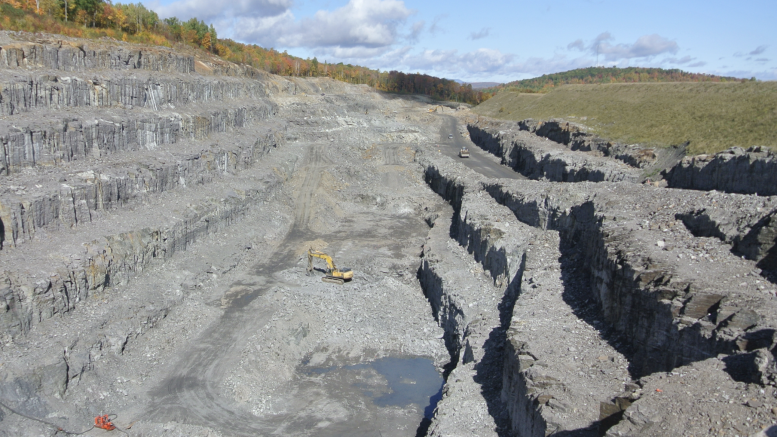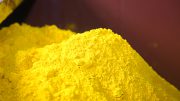Graphite has failed to deliver on its lithium moment that some analysts (myself, included) believed would materialize in 2023.
When I say, ‘lithium moment,’ I mean a repeat of the exceptional returns the lithium sector delivered last year on the back of expanding EV manufacturing capacity in the U.S. and Asia.
It seemed graphite, the anode material used in EV batteries, was set to follow in lithium’s wake, having been ignored by investors throughout last year’s lithium buying mania. Yet, rather than boom, the sector has slid backwards for most of 2023.
So, given that far more graphite material is needed (by weight) than lithium in an EV battery, does this represent a growing mismatch between the prices of various future facing commodities?
Well, perhaps, but there are some key points that make the pricing of graphite somewhat unique compared to its more ‘fashionable’ EV-battery material cousin, lithium.
First, when people look at graphite as an investment theme they tend to think exclusively about its role as anode material in EV batteries, a future facing metal set to boom in our net zero energy transition. Yet, as it stands, less than one quarter of graphite supply goes into building EV batteries. Output is funnelled toward traditional industries such as brake linings, lubricants and steel producing electrodes.
That’s in stark contrast to lithium, where virtually all supply is directed to the electric vehicle market. So, while this relatively small portion of graphite’s demand segment is growing, demand in other areas remains subdued.
Another area of weakness potentially comes from the synthetic market. Graphite is one of those unique commodities that can be manufactured ‘artificially.’ In fact, synthetic graphite is more desirable among the EV battery makers thanks to its excellent purity.
The ability to manufacture graphite dampens the commodities ‘scarcity’ factor. Supply is virtually limitless, except for one thing…
Producing synthetic graphite is energy intensive. It makes it far more expensive to produce versus naturally ‘mined’ graphite. That’s the key advantage for producers when energy prices begin to rise.
If we see energy costs surge in the years ahead (something I’ve written about extensively this year), then this puts pressure on the synthetic market. That’s good news for graphite miners.
So, what could lift the sector out of its slump in 2023? Like all commodities we need to look at the supply and demand fundamentals to get some idea on the future trajectory of prices.
In terms of supply, you must first understand what’s going on in China. For several years, we’ve had excess capacity of graphite. The bulk of this material has come from China, which dominates global supply at around 70-80% of the market.
This includes the small and large flake forms of graphite. Small flake is the material used in EV anodes.
However, the principal graphite mining area, known as Shandong Province in China, has suffered from years of declining grades. Mining in the region has come to a halt due to declining output and the implementation of much stricter environmental laws.
Other areas in China have picked up some of the slack — mostly in the small flake market which has kept a ceiling on prices.
But reduced output in China is the key area to watch for price strength in the graphite market.
So, with that, let’s turn our attention to the demand side.
Not surprisingly, growth in graphite demand is heavily dependent on EV uptake. As I highlighted earlier, that’s only around 25% of the current graphite market. But according to Benchmark Intelligence EVs are set to become the dominating demand driver. According to the research firm, the battery market is expected to push demand for graphite eight-fold through to 2030.
That will align it more closely with lithium whose principal demand driver is the battery market.
Pouncing on Sector Weakness
With weakened supply and demand fundamentals, the graphite sector has struggled this year. That’s a potential buying opportunity for investors looking at the long-term demand drivers underpinned by graphite’s critical role in EV-battery manufacturing.
African-based producer Syrah Resources (ASX: SYR), for example, has seen its share price sink more than 60% since November 2022. Lower graphite prices and deliberate scaling back on output have weighed heavily on the company’s valuation.
According to Syrah, it will continue scaling back production at its Balama operation in Mozambique until demand conditions warrant increased output. Or, in other words, when prices rise.
That’s dampened the company’s revenue outlook, but it does offer investors a chance to capitalize on depressed conditions. You see, Syrah is one of the few active graphite producers operating outside China. That makes it an attractive option for EV manufacturers seeking alternative supply routes.
But weakness has spread throughout the graphite industry, with producers, explorers and developers all trading at enormous discounts to 2022 prices.
It’s not just producers that could be positioned well for a graphite recovery. Perhaps a better investment strategy would be to focus on companies operating in regions that will be the benefactors of generous government initiatives.
One of those is the United States’ Inflation Reduction Act (IRA). Essentially, the ‘IRA’ is an incentive for local producers to supply the U.S. market with critical metals so it can achieve its energy transition ambitions without relying on China.
But there’s another government policy set to advantage a small handful of graphite developers.
It centres around the European Union’s recent drive to push-up domestic capacity to produce its own critical metals and it places local producers in a highly advantageous position. Essentially, this is Europe’s version of the IRA.
It will offer mining companies in Europe a short cut to production, cutting through much of the red tape that’s existed in the region for decades. But it also offers these companies access to unique sources of funding as European governments look to boost critical metal capacity.
Western Europe is also endowed with high-net worth investors who have few options for investing in local mining stocks. It means a small handful of Europe operators could benefit from ‘local bias’ as fund managers look to maintain their allocation toward local investments while meeting their green energy or ESG requirements.
Australian-owned Talga Group (ASX: TLG), for example, with its high-grade graphite deposit located in Sweden, holds a geographical advantage over its peers. The advantages could come through exclusive offtake agreements with European manufacturers while also having priority access to European financing.
— This column was previously published in Livewiremarkets.com.
James Cooper is a former exploration geologist turned mining analyst. He’s worked for major and junior companies throughout Australia and Africa, including Barrick Gold, Equinox Minerals, Crosslands Resources, and Northern Star and has been involved with all phases of exploration across a host of different commodities. Based in Melbourne, he’s now the resident commodities analyst at Fat Tail Investment Research and editor for the Diggers & Drillers Publication.






Be the first to comment on "What happened to graphite’s ‘lithium moment’?"